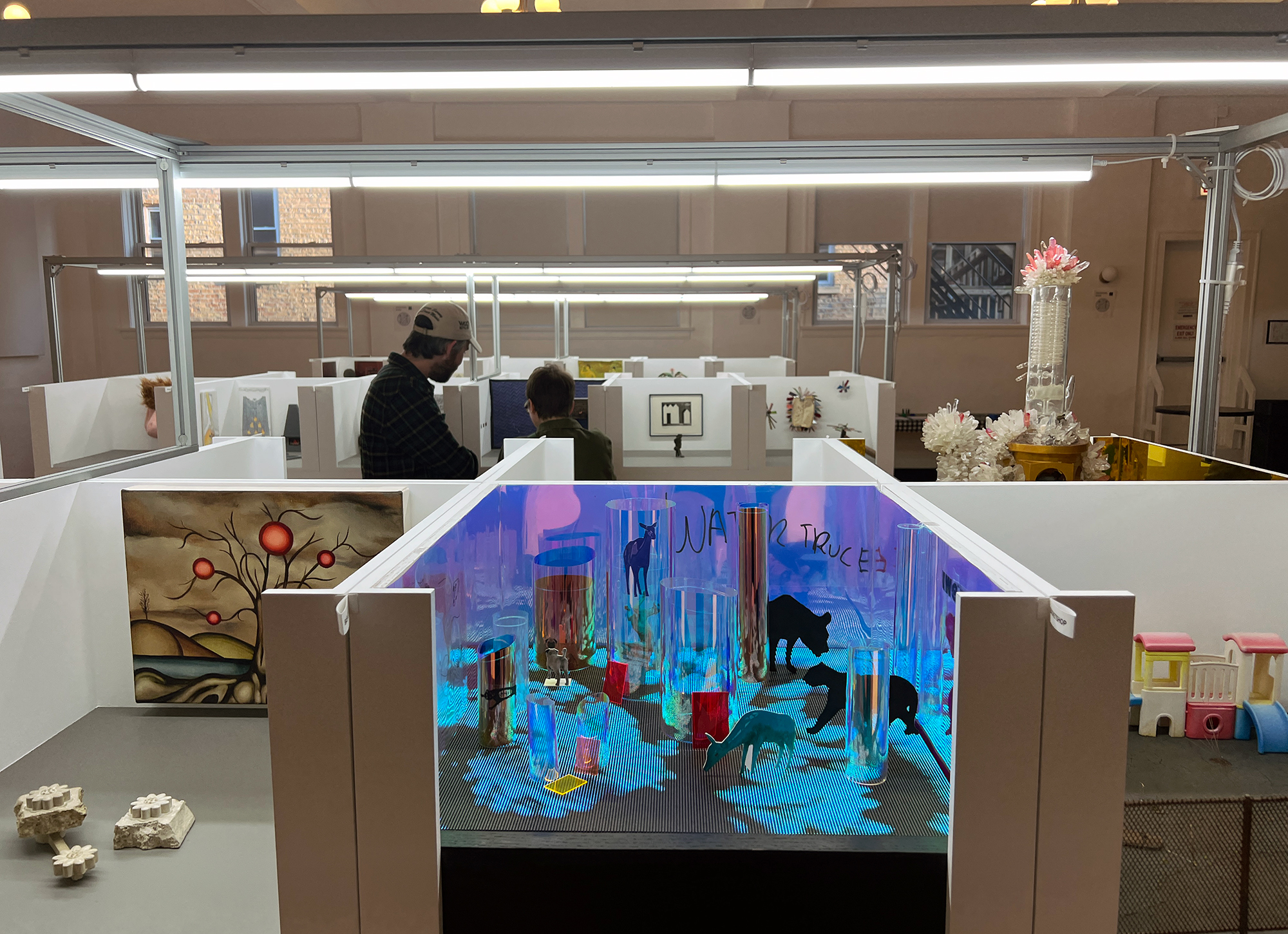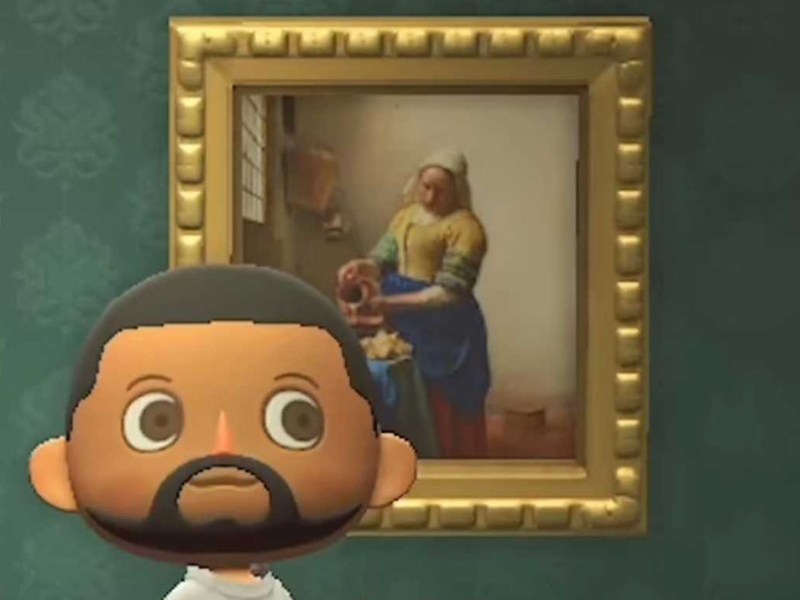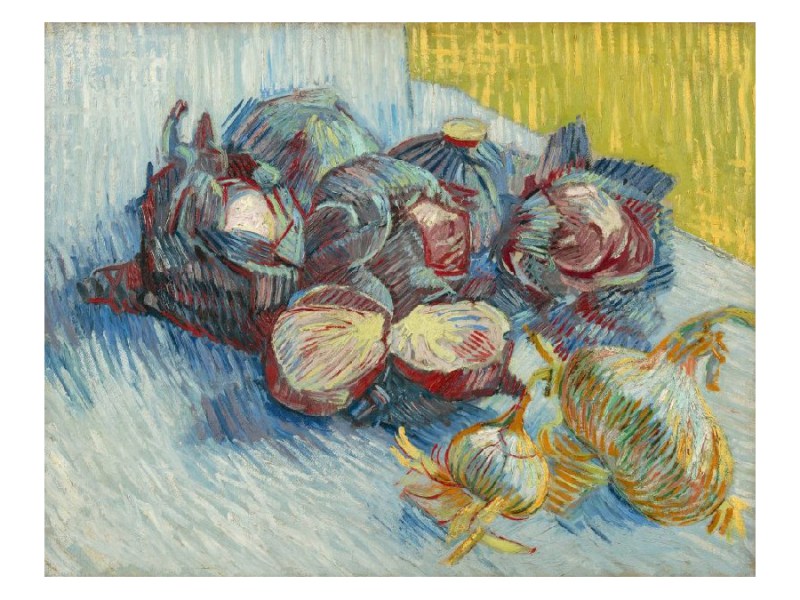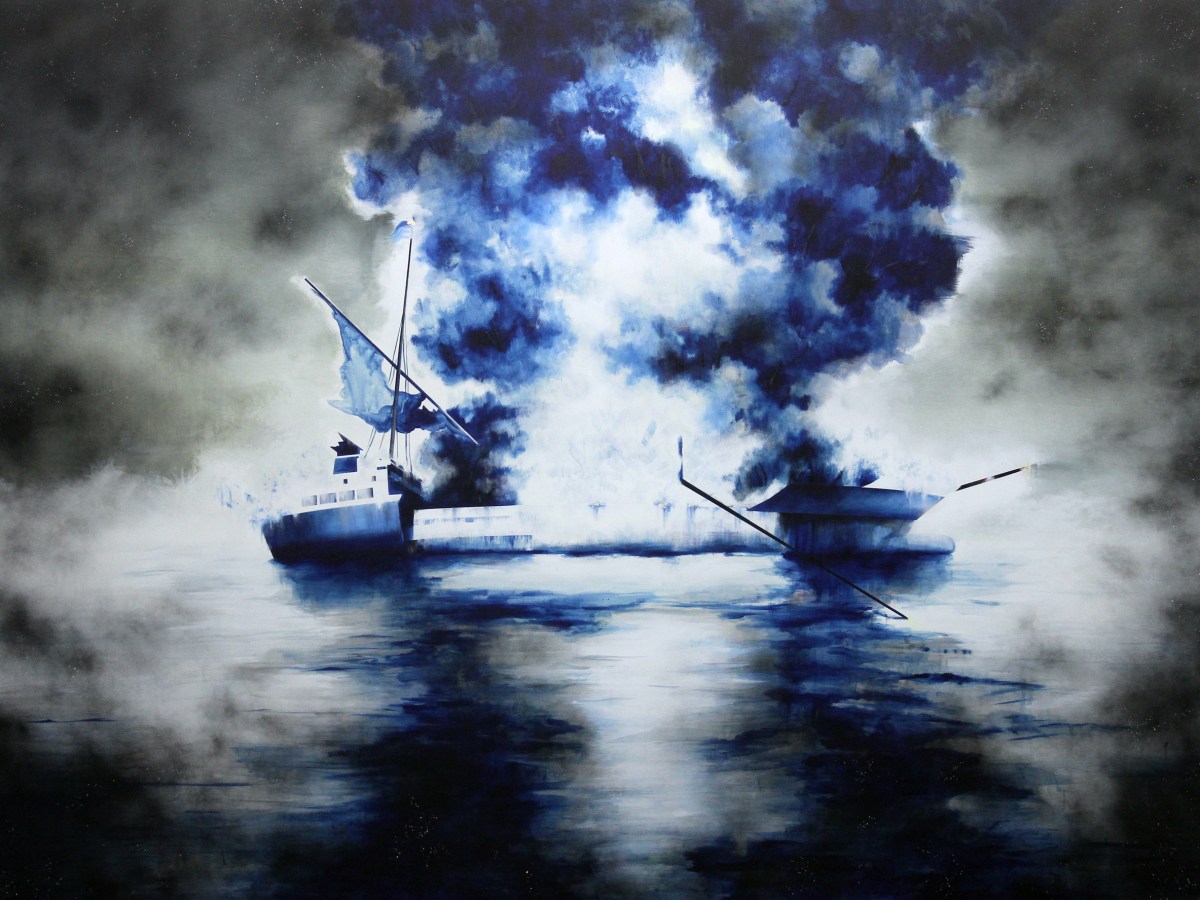CHICAGO — As Expo Chicago brought hundreds of exhibitors and thousands of visitors flocking to the Navy Pier over the weekend, another art fair took place across town on a much different scale. Now in its third year, Barely Fair presents all the excitement, drama, and aesthetics of a contemporary art fair, all at one-twelfth of the size.
The show is the brainchild of Josh Dihle, Tony Lewis, Roland Miller, and Kate Sierzputowski, co-directors at the artist-run project space Julius Caesar Gallery near Garfield Park.
“We recognize that there’s a lot of miniature galleries, around the country and around the world, and that it’s a function of some of the compressive forces of the art market in the art world,” said Dihle, taking a moment away from ushering his students from the School of the Art Institute of Chicago (SAIC) around the fair to speak with Hyperallergic.
“People are trying to do these things without a real profit margin or forced to do it in a very small constrained way, and then art fairs, by contrast, are mushrooming into these Goliath kinds of things,” he continued. “So we kind of wanted to lean into that and satirize it a little bit — the bigger art world and the big art fairs — with our miniature version.”

Irony or no irony, Barely Fair’s organizers, exhibitors, and artists take their work seriously.
“We’re very aware of the realities of the art market,” said Miller, also on hand and overseeing the final details before the opening. “And art fairs are important, but also so ridiculous. While Barely Fair is satirizing the whole situation, we also want to try and create a platform that elevates artist-run project spaces.”
This year’s edition features 36 exhibitors, including international gallerists, who buy in to participate on a sliding scale, from $150 to $1,500 for a booth. As accomplished miniaturists already know, working smaller does not equate working cheaper, a grim reality that Miller and his co-directors continue to work around as their funny idea becomes a tiny institution in its own right.
“It’s crazy that even at this scale, the financials of an art fair still do not work,” Miller said.

The numbers might be untenable, but the results are delightful, with each exhibitor presenting a slightly different take on the concept of art fair in miniature. Some have opted for perfect facsimile, such as the Chicago gallery Corbett vs. Dempsey, which presented a collection of meticulously framed etchings and a three-and-three-quarters-inch bronze sculpture of works created in the late 1960s and early 1970s by artist Jimmy Wright (who happens to have a show of full-scale works currently on display at the gallery); or Scherben, a Berlin-based space featuring new works by Jens Rønholt Schmidt and Die Kette, which only tips its hand at scale by leaving intact the frilled paper edge where a drawing was torn from a sketchbook.

Others went for an immersive installation approach, like Cincinnati’s Basket Shop Gallery, which presented a kind of naturescape by Jaime Raybin and R.D. King composed of dichroic film and fluorescent polyethylene and populated with cutout paper deer and other wildlife. The Latent Space, a literally latent gallery (having recently shifted from Chicago to LA), displayed a bleak, perfectly scaled micro-playground by Sayre Gomez. Gomez wasn’t the only big name at the fair, as the Pickleman booth presented “Mini Bean” (2006), a tiny replica of Anish Kapoor’s iconic public sculpture in downtown Chicago, made by Kapoor himself.

Beyond the delights of little artworks and adorably tiny scenes, there was ample room for Surrealist takes — once a miniaturist abandons ideas of scale or verisimilitude, things get immediately strange. London-based COB presented an installation by Victor Seward, comprised of six acrylic and enamel daisies, a 3D-printed realistic resin fly, and a slice of realistic bread made of gypsum in an arrangement of quotidian subjects that turned out deeply uncanny. Bread also played a role in Patrick Mohundro’s installation for Lonesome Dove, a project space located in an alcove under a stoop in Ridgewood, Queens. Five out of Mohundro’s six flowers were made of stained glass and roofing nails, but the sixth and central work incorporated a Wonder Classic hot dog bun. The gallery threw in a tiny scale folding chair and table with a miniature stack of works lists, to complete the odd juxtaposition.

Several gallerists were on hand to comment on the particularities of mounting a tiny art fair booth. What seems initially like a lark soon becomes a serious question of whom to invite. “When you’re putting together a show, you think about artists you like and how it works in the space,” said Jacob Barnes of the London- and Berlin-based gallery Grove, which presented a four-person show by C. Lucy R. Whitehead, Johannes Bosisio, Filippo Cegani, and Brittany Shepherd. “But for something like this, it has to be someone who can work at a scale. It was fun to come at it from this question — how can we reimagine what we do at this size and make it all work?”
While Barnes conceded that the cost of international shipping being a great deal lower made it an attractive proposition — not to mention the ability to do something more experimental without risking the loss of investment in a typical $10,000 art fair booth — dealing in works that small also had its own set of hazards.
“You don’t worry so much at a regular fair about someone stealing a giant painting,” said Barnes. “But I have to keep an eye on my tote bag, or someone could walk off with the entire collection!”
As with any fair, there was far more to see than space to mention — but unlike Expo Chicago, which has come and gone, the Barely Fair will be around for one more weekend through April 23, with programming including Minor Matters, a small symposium on the economies of scale. For exhibitors or visitors who find the art world overwhelming, Barely Fair is an opportunity to take it on in smaller bites.



















